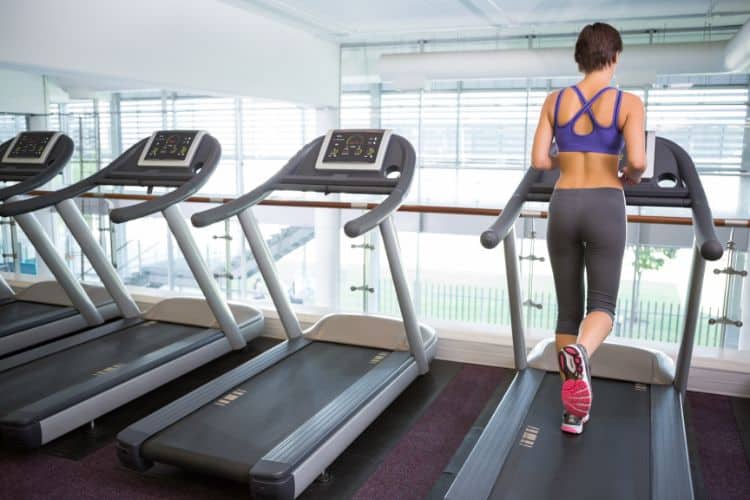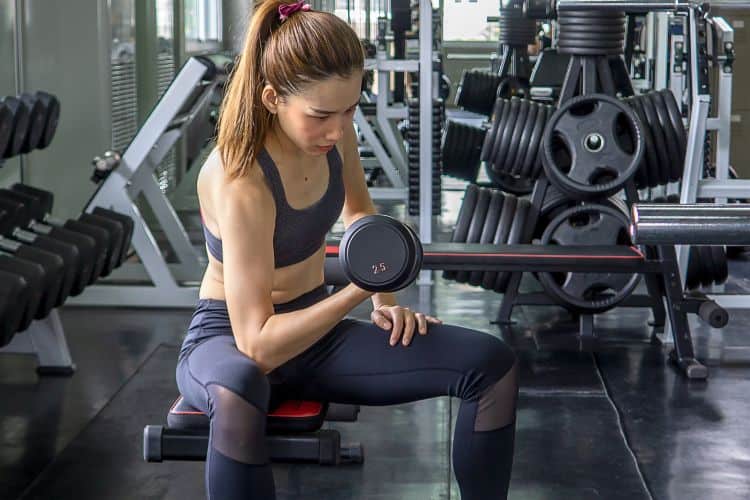Best Full Body Isolation Workout Plan to Sculpt and Tone Muscles
When most people think of resistance training, they often picture compound lifts like squats, bench presses, or deadlifts. While compound exercises are essential for building overall strength, isolation training plays a critical role in shaping, defining, and strengthening specific muscles. A full body isolation workout combines the best of both worlds—systematically targeting each major muscle group with precision while still allowing you to hit the entire body in one training session.
In this article, you’ll learn what an isolation workout is, the benefits of incorporating it into your routine, and a complete full body isolation workout plan you can follow to sculpt lean muscle, improve balance, and break through plateaus.
What is an Full Body Isolation Workout Plan
An isolation workout is a training style that focuses on exercises targeting a single muscle group at a time. Unlike compound exercises, which recruit multiple muscle groups simultaneously (like push-ups or deadlifts), isolation movements are designed to eliminate “help” from surrounding muscles.
For example:
- Bicep curls → Target primarily the biceps.
- Leg extensions → Focus on the quadriceps.
- Lateral raises → Build the shoulders without relying heavily on chest or triceps.
When you put these isolation movements together into a structured program, you create a full body isolation workout—ensuring that every major muscle gets worked directly and with intensity.
Benefits of a Full Body Isolation Workout
1. Muscle Symmetry and Definition
Isolation exercises allow you to correct muscle imbalances and bring up weaker areas. For example, if your triceps lag behind your biceps, isolation training ensures they get equal attention.
2. Precision Targeting
By focusing on one muscle at a time, you can strengthen and activate areas that compound lifts often overlook, leading to a more sculpted and well-rounded physique.
3. Injury Prevention
Isolation training strengthens stabilizers and small muscle groups that often get neglected. This prevents overuse injuries and enhances joint health.
4. Improved Mind-Muscle Connection
When isolating, you’re forced to concentrate on contracting the targeted muscle, which improves neuromuscular efficiency and maximizes growth.
5. Aesthetic Gains
If your goal is muscle tone and sculpting, full body isolation workouts are excellent for developing definition in the arms, shoulders, abs, and glutes.
Key Muscles Targeted in a Full Body Isolation Workout
A true full body routine should target all the major muscle groups. Here’s the breakdown:
- Upper Body: Biceps, triceps, shoulders, chest, and back
- Core: Abs and obliques
- Lower Body: Quadriceps, hamstrings, glutes, and calves
By combining the right isolation exercises, you’ll sculpt each area while maintaining balance across the body.
Full Body Isolation Workout Plan
This workout can be performed 2–3 times per week, depending on your training schedule. Aim for 3 sets of 10–15 reps per exercise, focusing on controlled movement and perfect form.
Warm-Up (5–10 Minutes) Full Body Isolation Workouts
Before diving into isolation work, warm up with dynamic stretches and light cardio such as:
- Arm circles
- Leg swings
- Jumping jacks
- Light resistance band pull-aparts
Upper Body Isolation
1. Bicep Curls (Biceps)
- How to do it: Hold a dumbbell in each hand, curl up to shoulder height, and lower slowly.
- Tip: Keep elbows locked to your sides to avoid swinging.
2. Tricep Kickbacks (Triceps)
- How to do it: Hinge forward at the hips, elbows tucked, and extend the dumbbells backward until arms are straight.
- Benefit: Builds toned and defined triceps.
3. Lateral Raises (Shoulders)
- How to do it: With dumbbells at your sides, lift arms out to shoulder height and slowly return.
- Tip: Avoid shrugging to keep the work on your deltoids.
4. Chest Fly (Chest)
- How to do it: Lie on a bench holding dumbbells above your chest, lower arms outward in a wide arc, and bring them back up.
- Benefit: Isolates the pectorals for chest shaping.
5. Dumbbell Shrugs (Traps)
- How to do it: Hold heavy dumbbells at your sides and shrug shoulders upward as high as possible.
- Tip: Pause at the top to maximize contraction.
Back Full Body Isolation Workouts
6. Dumbbell Rows (Lats)
- How to do it: Rest one knee and hand on a bench, row dumbbell toward your waist.
- Benefit: Builds width in your lats.
7. Reverse Fly (Rear Delts)
- How to do it: Hinge forward, hold dumbbells below chest, and raise arms out wide.
- Tip: Focus on squeezing shoulder blades together.
Core Isolation Full Body Isolation Workouts
8. Cable Crunches (Abs)
- How to do it: Kneel in front of a cable machine with a rope, crunch downward using your abs.
- Benefit: Isolates the rectus abdominis for defined abs.
9. Side Plank Hip Dips (Obliques)
- How to do it: Hold a side plank and dip hips toward the ground, then lift back up.
- Tip: Slow and controlled movement enhances oblique activation.
Lower Body Isolation
10. Leg Extensions (Quads)
- How to do it: Use a machine to extend legs upward against resistance.
- Benefit: Direct quad isolation, great for sculpting thighs.
11. Hamstring Curls (Hamstrings)
- How to do it: Use a lying leg curl machine, flexing your knees to lift the pad.
- Tip: Avoid jerking—control the lowering phase.
12. Glute Kickbacks (Glutes)
- How to do it: Use a cable machine or resistance band, extend one leg backward while squeezing glutes.
- Benefit: Builds stronger, more toned glutes.
13. Standing Calf Raises (Calves)
- How to do it: Stand on a raised surface, push through toes to lift heels, and lower back down.
- Tip: Hold at the top for 2 seconds to maximize burn.
Sample Full Body Isolation Workout Schedule
Here’s how you could structure this workout into a weekly plan:
- Day 1: Full Body Isolation (Upper + Core Focus)
- Day 2: Rest or light cardio
- Day 3: Full Body Isolation (Lower + Core Focus)
- Day 4: Rest or yoga
- Day 5: Full Body Isolation (Full emphasis—all muscle groups)
- Day 6: Active recovery (walking, swimming, or stretching)
- Day 7: Rest
This balance allows for optimal muscle growth and recovery while still giving attention to every area.
Tips for Success with Full Body Isolation Workouts
Isolation movements are about precision. Focus on strict form rather than heavy weights to avoid compensating with other muscles.
2. Control the Tempo
Slow, controlled reps increase time under tension, leading to better results.
3. Combine with Compound Training
Don’t neglect squats, deadlifts, and presses. Isolation is best used as a supplement, not a replacement, for compound lifts.
4. Use Progressive Overload
Gradually increase resistance, reps, or sets over time to continue building muscle.
5. Add Variety
Rotate isolation exercises every 6–8 weeks to challenge muscles in new ways.
Common Full Body Isolation Workouts Mistakes to Avoid
- Skipping Warm-Up: Going straight into isolation work without prepping increases injury risk.
- Using Too Much Momentum: Swinging weights reduces tension on the target muscle.
- Neglecting Smaller Muscles: Don’t forget traps, calves, and rear delts—they complete the balanced look.
- Overtraining: Isolation exercises can be taxing. Always allow time for muscle recovery.
Who Should Do Full Body Isolation Workouts?
- Beginners: Learn proper muscle activation and improve form.
- Intermediate Lifters: Correct imbalances and enhance aesthetics.
- Bodybuilders: Essential for sculpting muscle definition.
- Anyone with Specific Weak Points: Great for strengthening lagging muscle groups.
Build a Sculpted Body with Full Body Isolation Workout Training
A full body isolation workout is one of the most effective strategies to ensure every muscle group gets attention, balance, and growth. By integrating isolation movements into your routine, you’ll not only improve aesthetics but also support injury prevention, muscle balance, and long-term performance.
Whether you’re a beginner aiming to learn muscle control or an advanced lifter chasing definition, isolation training can help you reach the next level of your fitness journey. Pair this routine with proper nutrition, adequate rest, and consistency, and you’ll see significant changes in both strength and physique.
Want more workout and video guide?
Follow us on Pinterest, Facebook, and Subscribe to our Newsletter and Stay tuned for FREE downloads of our App coming soon!
Most Recommended




